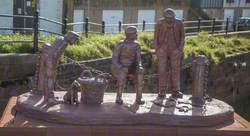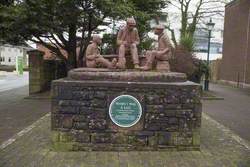How you can use this image
This image can be used for non-commercial research or private study purposes, and other UK exceptions to copyright permitted to users based in the United Kingdom under the Copyright, Designs and Patents Act 1988, as amended and revised. Any other type of use will need to be cleared with the rights holder(s).
Review the copyright credit lines that are located underneath the image, as these indicate who manages the copyright (©) within the artwork, and the photographic rights within the image.
The collection that owns the artwork may have more information on their own website about permitted uses and image licensing options.
Review our guidance pages which explain how you can reuse images, how to credit an image and how to find images in the public domain or with a Creative Commons licence available.
Notes
Add or edit a note on this artwork that only you can see. You can find notes again by going to the ‘Notes’ section of your account.
Title
The Legend of St Bega
Date
2000
Medium
haematite
Accession number
CA27_RT_S079
Work type
Statue
Custodian
St Bee's Parish Council
Work status
extant
Unveiling date
16th September 2000
Access
at all times
Inscription description
St. Bega was the daughter of an Irish king leaving sometime between 600 and 900 AD. She refused to marry the man of her father’s choice and fled in a small boat. Washed up here, she lived alone as a hermit caring for local people when she moved on to an unknown destination she left behind her arm-ring. Although it is not certain the Bega existed, the village was named after her, first as Kirby Becoc, later Saint Bees. The monks of the Priory, founded here after 1120, were the custodians of a bracelet or arm- ring believed to be her relic and they told her story. The ring remained here until 1539 when the Priory was dissolved. After 1539, a garbled version of the legend became currency including this story will be commended she wanted to find a nunnery she approached the Lord of Egremont laughing the promised her as much land as the snow would cover the next day the next day was Midsummer day but it snowed! This statue was unveiled on 16 September 2000 by the Mayor of Copeland, Councillor, Mrs Joan Hully Names of villagers are inscribed on a scroll in a capsule placed in the plinth by the Chairman of the Parish Council, John Halle. Sculptor: Colin Telfer of Maryport















